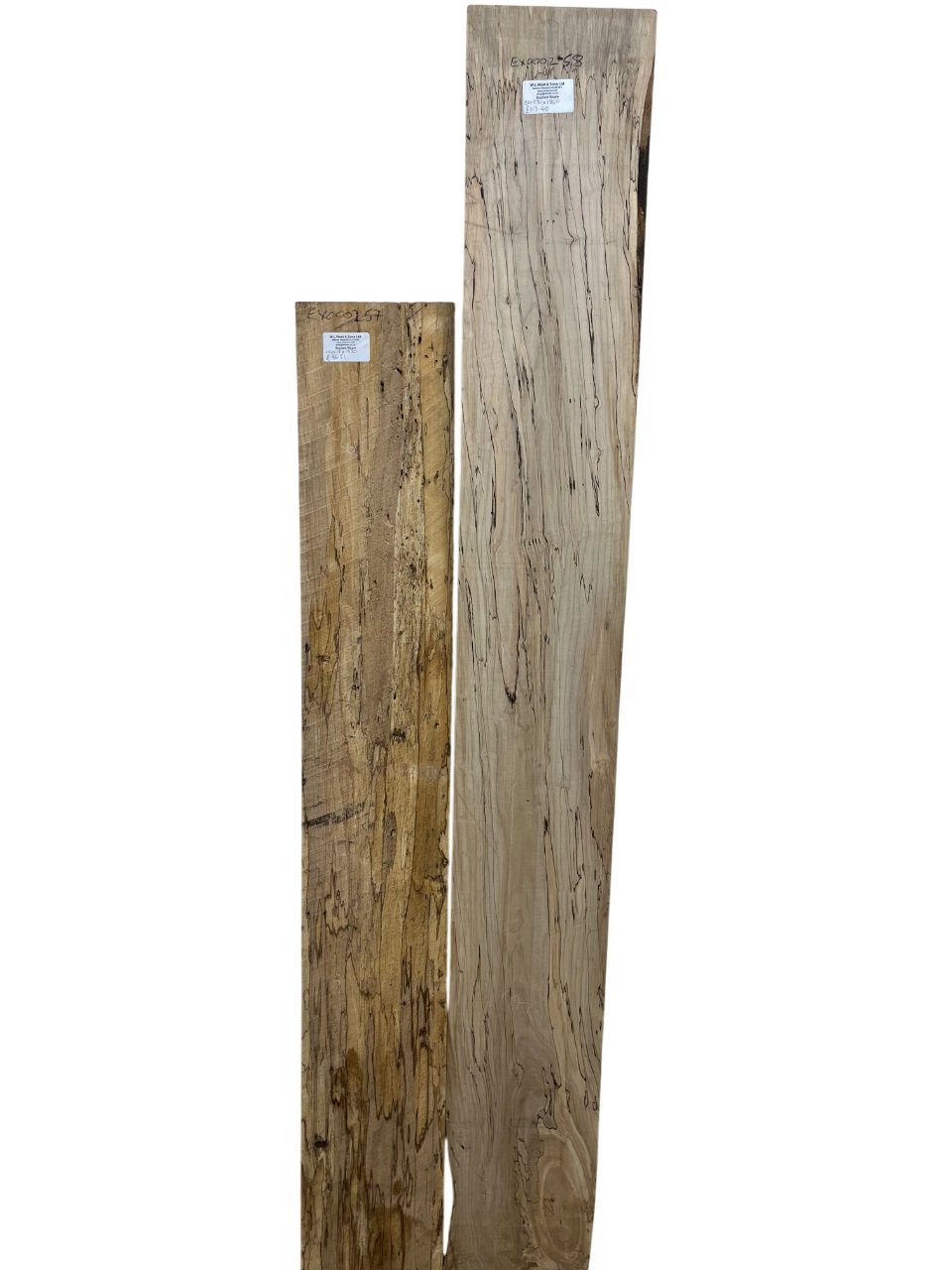 Image 1 of
Image 1 of

Spalted Beech Turning Blank (Grade 2)
European Beech (Fagus sylvatica)
Pale straw colour, sometimes with a pink or brown hue. Veneer tends to be slightly darker coloured, as slicing the veneer usually requires the wood to be prepared with steam, which gives the wood a more golden tone. flatsawn surfaces tend to be somewhat plain, while quartersawn surfaces exhibit a minute ray fleck pattern. Overall good workability; it machines well, and glues, finishes, and turns well.
NOTE: Grade 2 will include some of the following and therefore may need stabilising / filling before turning - cracks/splits, dead/rotten knots, softer punky timber, worm holes. Please bear this in mind before purchasing. Sizing is approximate +/- 5mm. Spalting is simply a fungal discoloration of wood, and can be found on a wide range of wood species and genera. It is found in wood that has begun initial stages of decay, and is then subsequently dried (preventing further decay). The partial decay, called spalting, can give the wood dark contrasting lines and streaks where fungus has begun to attack the wood. Grown in Britain.
Note: Images are indicative of the stock held but there will be variations from piece to piece
100x300x300mm
European Beech (Fagus sylvatica)
Pale straw colour, sometimes with a pink or brown hue. Veneer tends to be slightly darker coloured, as slicing the veneer usually requires the wood to be prepared with steam, which gives the wood a more golden tone. flatsawn surfaces tend to be somewhat plain, while quartersawn surfaces exhibit a minute ray fleck pattern. Overall good workability; it machines well, and glues, finishes, and turns well.
NOTE: Grade 2 will include some of the following and therefore may need stabilising / filling before turning - cracks/splits, dead/rotten knots, softer punky timber, worm holes. Please bear this in mind before purchasing. Sizing is approximate +/- 5mm. Spalting is simply a fungal discoloration of wood, and can be found on a wide range of wood species and genera. It is found in wood that has begun initial stages of decay, and is then subsequently dried (preventing further decay). The partial decay, called spalting, can give the wood dark contrasting lines and streaks where fungus has begun to attack the wood. Grown in Britain.
Note: Images are indicative of the stock held but there will be variations from piece to piece
100x300x300mm
European Beech (Fagus sylvatica)
Pale straw colour, sometimes with a pink or brown hue. Veneer tends to be slightly darker coloured, as slicing the veneer usually requires the wood to be prepared with steam, which gives the wood a more golden tone. flatsawn surfaces tend to be somewhat plain, while quartersawn surfaces exhibit a minute ray fleck pattern. Overall good workability; it machines well, and glues, finishes, and turns well.
NOTE: Grade 2 will include some of the following and therefore may need stabilising / filling before turning - cracks/splits, dead/rotten knots, softer punky timber, worm holes. Please bear this in mind before purchasing. Sizing is approximate +/- 5mm. Spalting is simply a fungal discoloration of wood, and can be found on a wide range of wood species and genera. It is found in wood that has begun initial stages of decay, and is then subsequently dried (preventing further decay). The partial decay, called spalting, can give the wood dark contrasting lines and streaks where fungus has begun to attack the wood. Grown in Britain.
Note: Images are indicative of the stock held but there will be variations from piece to piece
100x300x300mm











